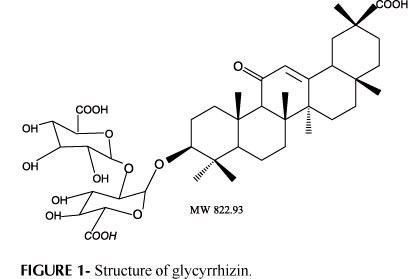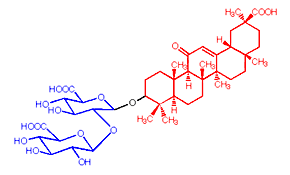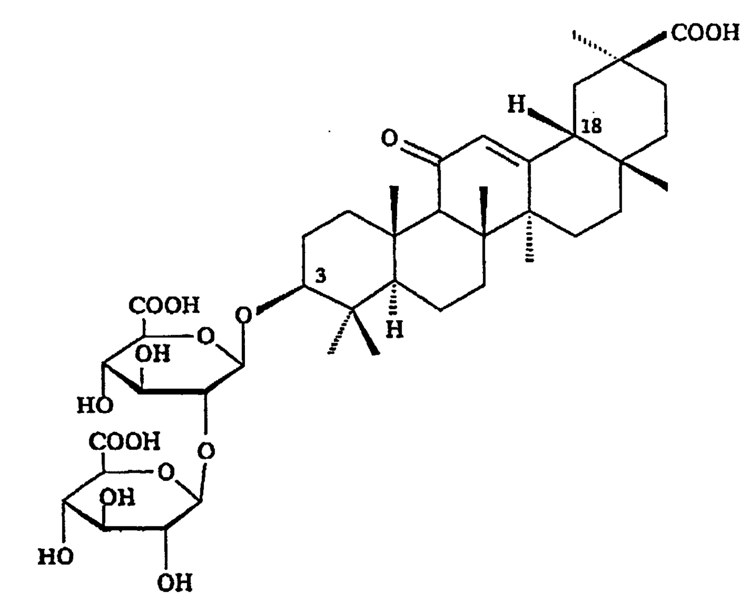Trade names Epigen, Glycyron ATC code A05BA08 (WHO) Formula C42H62O16 | Routes ofadministration Oral, intravenous Biological half-life 6.2-10.2 hours Molar mass 822.94 g/mol | |
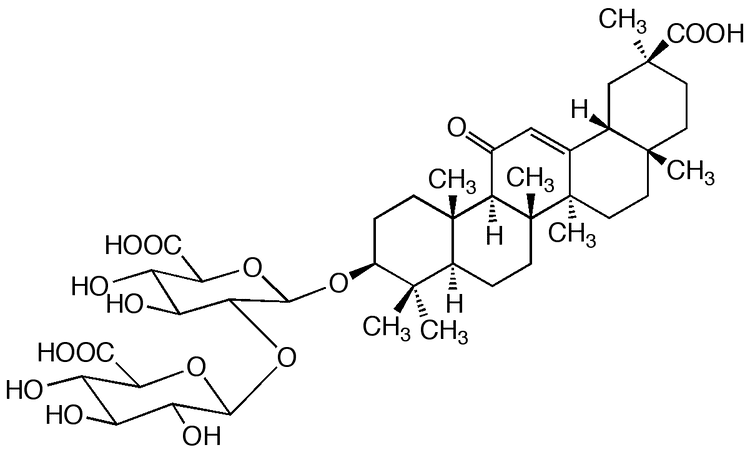 | ||
AHFS/Drugs.com International Drug Names Metabolism | ||
Glycyrrhizin (or glycyrrhizic acid or glycyrrhizinic acid) is the chief sweet-tasting constituent of Glycyrrhiza glabra (liquorice) root. Structurally it is a saponin and has been used as an emulsifier and gel-forming agent in foodstuff and cosmetics. Its aglycone is enoxolone and it has therefore been used as a prodrug for that compound, for example it is used in Japan to prevent liver carcinogenesis in patients with chronic hepatitis C.
Contents

Medical uses
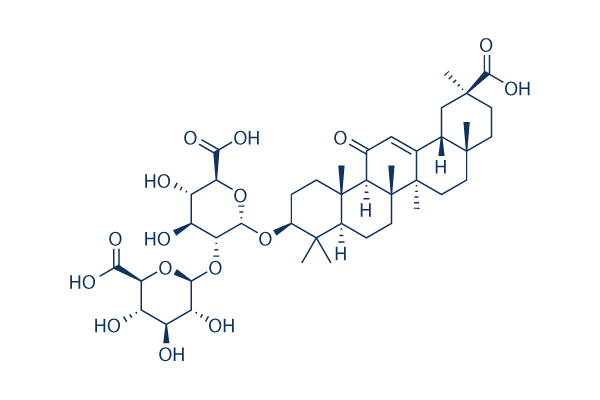
Glycyrrhizin inhibits liver cell injury and is given intravenously for the treatment of chronic viral hepatitis and cirrhosis in Japan. It has also proven itself effective in the treatment of autoimmune hepatitis in one clinical trial.
Adverse effects
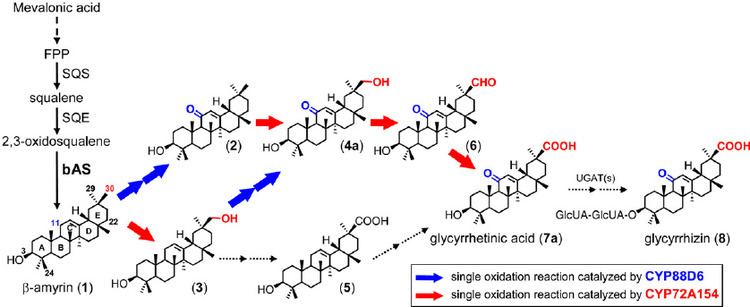
The most widely reported side effects of glycyrrhizin use are fluid retention. These effects are related to the inhibition of cortisol metabolism within the kidney, and the subsequent stimulation of the mineralocorticoid receptors. Other side effects include:
Mechanism of action

It inhibits the enzyme 11beta-hydroxysteroid dehydrogenase, which likely contributes to its anti-inflammatory and mineralocorticoid activity. It has a broad-spectrum of antiviral activity in vitro against:
Pharmacokinetics
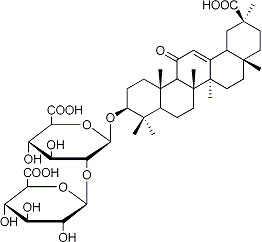
After oral ingestion, glycyrrhizin is first hydrolysed to 18β-glycyrrhetinic acid by intestinal bacteria. After complete absorption from the gut, β-glycyrrhetinic acid is metabolised to 3β-monoglucuronyl-18β-glycyrrhetinic acid in the liver. This metabolite then circulates in the bloodstream. Consequently, its oral bioavailability is poor. The main part is eliminated by bile and only a minor part (0.31–0.67%) by urine. After oral ingestion of 600 mg of glycyrrhizin the metabolite appeared in urine after 1.5 to 14 hours. Maximal concentrations (0.49 to 2.69 mg/l) were achieved after 1.5 to 39 hours and metabolite can be detected in the urine after 2 to 4 days.
Organoleptic properties
It is 30-50 times as sweet as sucrose (table sugar).
